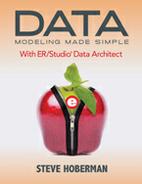Physical Data Model Explanation
The physical data model (PDM) is the logical data model compromised for specific software or hardware. On the CDM, we learn what the terms, business rules, and scope would be for a new order entry system. After understanding the need for an order entry system, we create a LDM representing the business solution. It contains all of the attributes and business rules needed to deliver the system. For example, the conceptual data model will show that a Customer places many Orders. The LDM will capture all of the details behind Customer and Order, such as the customer’s name, their address, and the order number. After understanding the business solution, we move on to the technical solution and build the PDM. We may make some modifications to the Customer and Order tables for example, for factors such as performance or storage.
While building the PDM, we address the issues that have to do with specific hardware or software such as:
· We have a big data scenario – how can we process a lot of data very quickly, and then afterwards analyze it very quickly?
· How can we make this information secure?
· How can we answer this business question in less than 2 seconds?
Note that in the early days of data modeling, when storage space was expensive and computers were slow, there were major modifications made to the PDM to make it work efficiently. In some cases, the PDM looked like it was for an entirely different application than the LDM. As technology improved, the PDM started looking more like the LDM. Faster and cheaper processors, cheaper and more generous disc space and system memory, and also specialized hardware, have all played their part to make the physical look more like its logical. However, with big data processing and analytical tools becoming more mainstream, there is now (at least temporarily) a large difference again between physical and logical. Physical big data designs can even be file-based to allow for fast loading and analyzing of data. So be aware of physical data models that are all in one table (or file) – it may be the optimal design depending on the big data technology.
